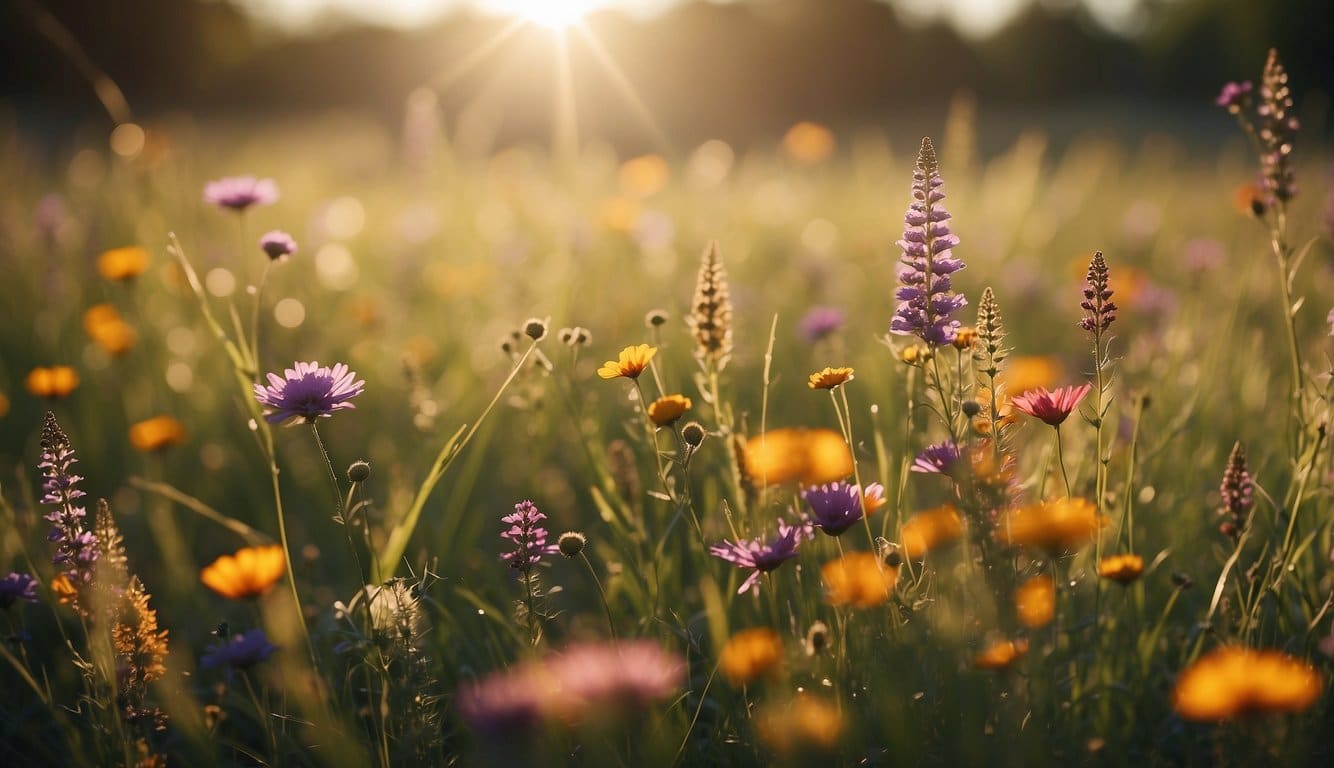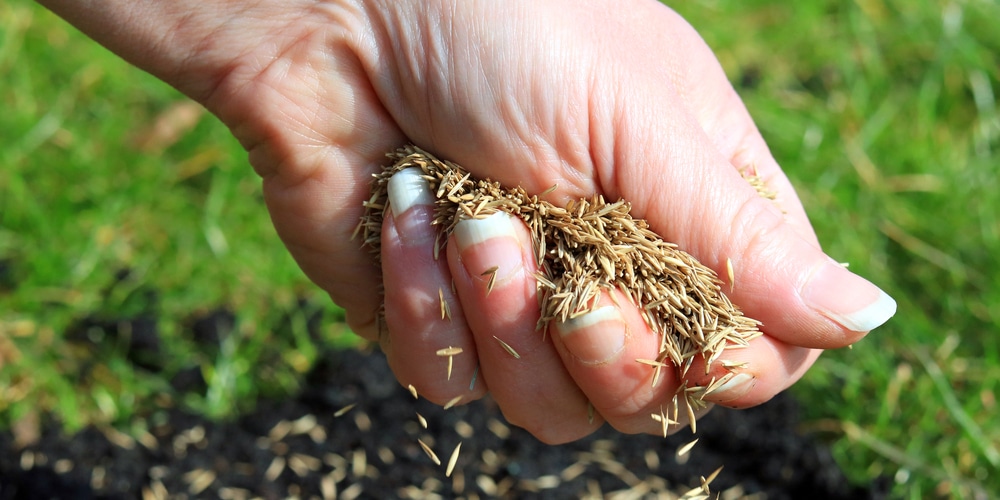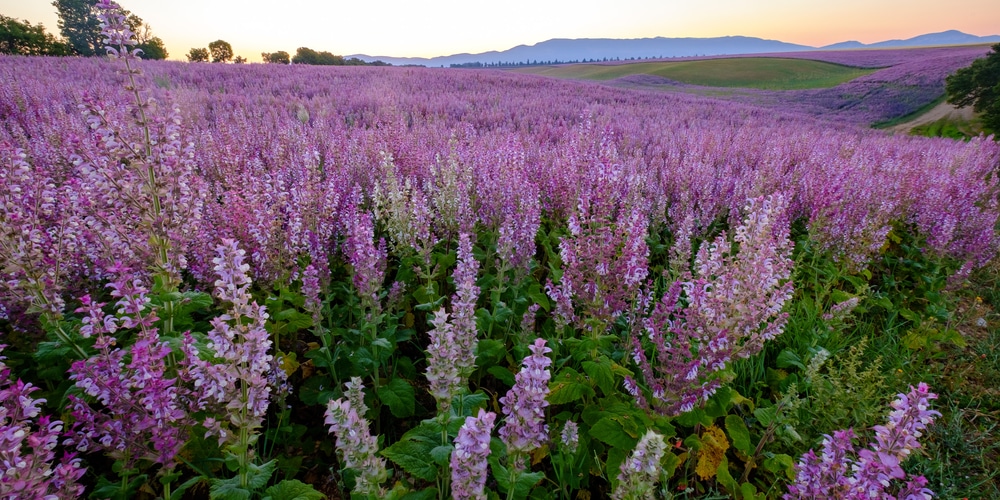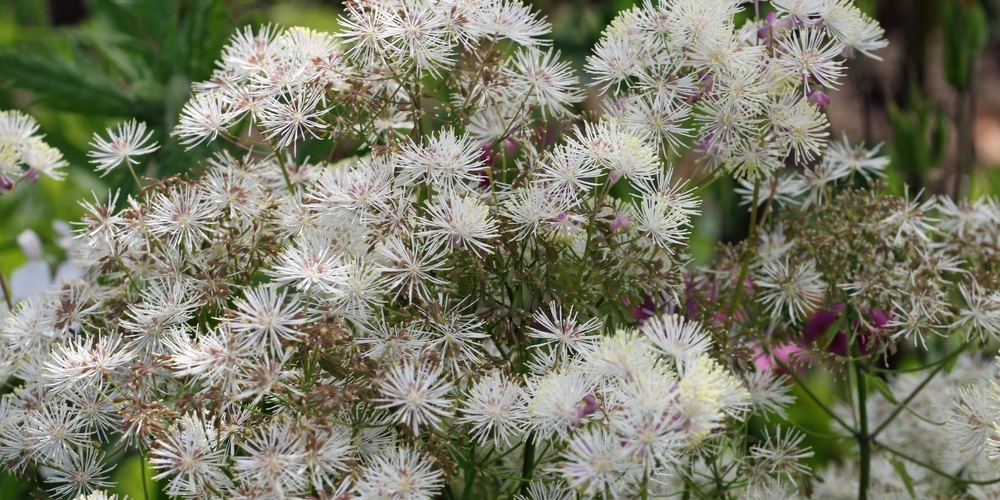Wildflower Meadows: 101
Wildflower meadows contribute significantly to biodiversity and enhance the natural beauty of your landscape.
When you create a wildflower meadow using grass seed mixes, you are engaging in an act of ecological restoration, which is both rewarding and environmentally beneficial.
Benefits of Wildflower Meadows
- Increased Biodiversity: Your wildflower meadow will become a vibrant hub for various species of insects, birds, and other wildlife.This diversity in turn helps to maintain healthy ecosystems and can improve pollination for gardens and crops nearby.
- Ecosystem Services: Meadows play a crucial role in ecosystem functions, such as water filtration, carbon sequestration, and soil enrichment.By choosing to establish a meadow, you contribute directly to these ecological benefits.
- Aesthetic Appeal: A well-maintained wildflower meadow is not only beneficial for the environment but also provides a visually stunning landscape.Your choice to grow one offers a refreshing change from the conventional lawn, with vibrant color and texture that changes throughout the seasons.
Selection of Native Species
- Adaptation: Native species are adapted to your local climate, soil, and ecological conditions, which increases the success rate of your meadow.By selecting native species, you ensure your meadow is resilient and requires less maintenance.
- Support Local Wildlife: Native wildflowers provide the necessary habitat and food resources for local wildlife.You help to preserve the natural heritage and offer crucial support for threatened native species.
To create a thriving wildflower meadow, it’s essential to choose species that are well-suited to your local environment.
When making selections, consider the following:
- Soil Type: Know your soil conditions and choose species that will flourish in them.
- Sunlight: Determine how much sunlight your meadow area receives and select species that are suited to these levels of exposure.
- Moisture: Be aware of moisture levels in your area and choose plants that can thrive with that amount of water.
Planning Your Meadow
Creating a wildflower meadow starts with careful planning. You need to carefully select the right site and prepare the soil to ensure your meadow thrives.
Site Selection
- Sunlight: Choose a location that receives at least six hours of sunlight daily. Wildflowers require plenty of sunlight to grow.
- Drainage: Ensure the site has good drainage. Waterlogged soil can lead to root rot and inhibit growth.
- Surroundings: Consider the nearby flora and assess if there might be invasive species that could encroach on your meadow.
Soil Preparation
- Testing: Conduct a soil test to understand the pH and nutrient levels of your soil. Your local extension office can provide you with a test kit and instructions.
- Weed Removal: Remove all existing vegetation to minimize competition. This can be achieved by physical removal or a non-residual herbicide.
- Loosening Soil: Use a tiller or a garden fork to loosen the top 2-3 inches of soil. This will aid seed-to-soil contact and promote better germination rates.
- Raking: After loosening the soil, use a garden rake to level the area and remove any large clumps or rocks that could impede the growth of small seedlings.
Choosing Grass Seed Mixes
When endeavoring to create a wildflower meadow, the foundation of your success lies in selecting appropriate grass seed mixes that complement your wildflower choices and thrive in your regional climate.
Types of Grass Seed Mixes
Selecting the right type of grass seed mix is crucial for a balanced and sustainable meadow:
- Regional Mixes: Ideal for matching your local ecosystem, these mixes typically contain a variety of grasses native to your area. They tend to be low-maintenance and beneficial to local wildlife.
- Cool-Season Grasses: These are perfect for cooler climates, offering year-round greenery, and include species like fescue and bluegrass.
- Warm-Season Grasses: They thrive in hot weather and include buffalo grass and Bermuda grass, which go dormant in cooler months.
- Low-Growth Mixes: Suited for meadows where less maintenance is desired, these mixes require less mowing.
Customizing Seed Mixtures
Creating a custom grass seed mixture involves:
- Assessing Soil Type: Your soil’s texture and fertility significantly influence your seed choice.
- Considering Sunlight: Amount of daily sunlight helps determine which grass species will prosper.
- Balancing Diversity: Pairing flowers and grasses that have similar growth requirements ensures a cohesive meadow.
- Focus on Sustainability: Choose seeds that will not only establish quickly but also contribute to soil health and biodiversity.
Meadow Establishment
Creating a wildflower meadow with grass seed mixes is a rewarding process that requires careful planning and execution. You’ll learn the right techniques for sowing and how to maintain your meadow for years of vibrant blooms.
Sowing Techniques
- Choose the right time: The optimal time for sowing wildflower seeds is during mid-spring or early autumn. This allows the seeds to establish themselves under optimal growing conditions.For grass seed mixes, you can find detailed pricing and mixing advice to tailor your meadow to specific objectives and budgets in resources like UNH Extension’s guide.
- Prepare the soil: Aim for bare soil with little competition from existing vegetation to ensure your seeds have room to grow. A well-prepared site increases the success rate of seed germination.
- Sowing method:
- Scatter the seeds evenly across the soil. For wildflower meadows, use a rate of roughly 20 lbs per acre or 0.5 lbs per 1000 square feet.
- Rake gently to cover the seeds lightly with soil, ensuring good contact.
- Water the sown area carefully to moisten the soil, aiding in seed germination without causing erosion.
Meadow Maintenance
- First Year Cutting: During the first year, cut the meadow about three times to prevent competing species from overwhelming the wildflower seedlings.Cut to about 5 cm off the ground using a mower, strimmer, or—preferably for conservation purposes—a manual scythe.
Maintenance tips, including first-year cutting, are available through The Conservation Volunteers guide.
- Ongoing Care:
- Monitor and remove invasive species to prevent them from taking over.
- Yellow Rattle: Consider introducing this plant if you’re dealing with vigorous grass; it’s a parasitic species that can help to weaken dominant grasses and make space for wildflowers to flourish.
- Annual reseeding: Some areas may need reseeding if wildflowers don’t establish in the first year or to introduce new species.
Ecosystem Preservation
Creating a wildflower meadow with grass seed mixes is a strategic approach to preserving ecosystems by controlling invasive species and enhancing biodiversity.
Managing Invasives
- Identification: Recognize invasive species in your area. Look for plants that spread aggressively and outcompete native wildflowers.
- Control Methods: Utilize appropriate strategies to remove or control invasive species, such as:
- Manual removal
- Targeted grazing
- Ecologically safe herbicides
Promoting Biodiversity
- Selection of Seeds: Choose a diverse grass seed mix tailored to your region to ensure a range of plants that support local wildlife.
- Planting Technique: Broadcast seeds evenly and consider mixing them with damp sand for more uniform distribution; use a ratio of 4 parts sand to 1 part seed.
Frequently Asked Questions
Creating a wildflower meadow from a grassy area requires straightforward steps and specific care throughout the year. Learn how to prepare, plant, and maintain your meadow for sustainable, vibrant growth.
What are the steps to establish a wildflower meadow from a grassy field?
- Assess and choose a suitable area with plenty of sunlight.
- Eliminate existing grass and weeds to reduce competition.
- Prepare the soil by slightly disturbing it to create a seedbed.
- Mix wildflower seeds with grass seed tailored to your local climate and soil conditions.
- Sow seeds evenly across the prepared area, ensuring good soil contact.
- Regular maintenance, including mowing and watering, is crucial, especially in the first year.
What preparation is needed before sowing wildflower seeds with grasses?
- Remove existing vegetation to minimize competition.
- Break up the soil surface to improve seed contact. Avoid deep tilling, which can bring up weed seeds.
- Test soil to determine if amendments are necessary for the wildflower species selected.
Can wildflower meadows be maintained sustainably alongside a lawn area?
- Yes, you can create a wildflower area within your lawn by sectioning off a part of the grass and preparing it for wildflower seeds.
- The maintenance of the meadow and grass areas will differ. Meadows require less frequent mowing and care.
What is the ideal time of year to plant wildflower seeds?
- For most wildflower species, early autumn is ideal as it simulates natural seeding processes.
- Some species benefit from winter stratification. They should be sown accordingly to ensure germination in spring.
How should wildflower seeds be spread over an existing lawn for optimal growth?
- Mow your lawn as short as possible and remove clippings.
- Rake lightly to disturb the soil and create a seedbed.
- Broadcast the seeds evenly, using a hand sowing method for smaller areas or mechanical spreaders for larger ones.
What care does a wildflower meadow require during winter months?
- Minimize foot traffic to protect dormant plants and soil structure.
- Refrain from cutting back plants. Old growth provides insulation and habitats for wildlife.
- Let the meadow stand through winter. Cut back in early spring to prepare for new growth.
Last update on 2025-06-06 / Affiliate links / Images from Amazon Product Advertising API






